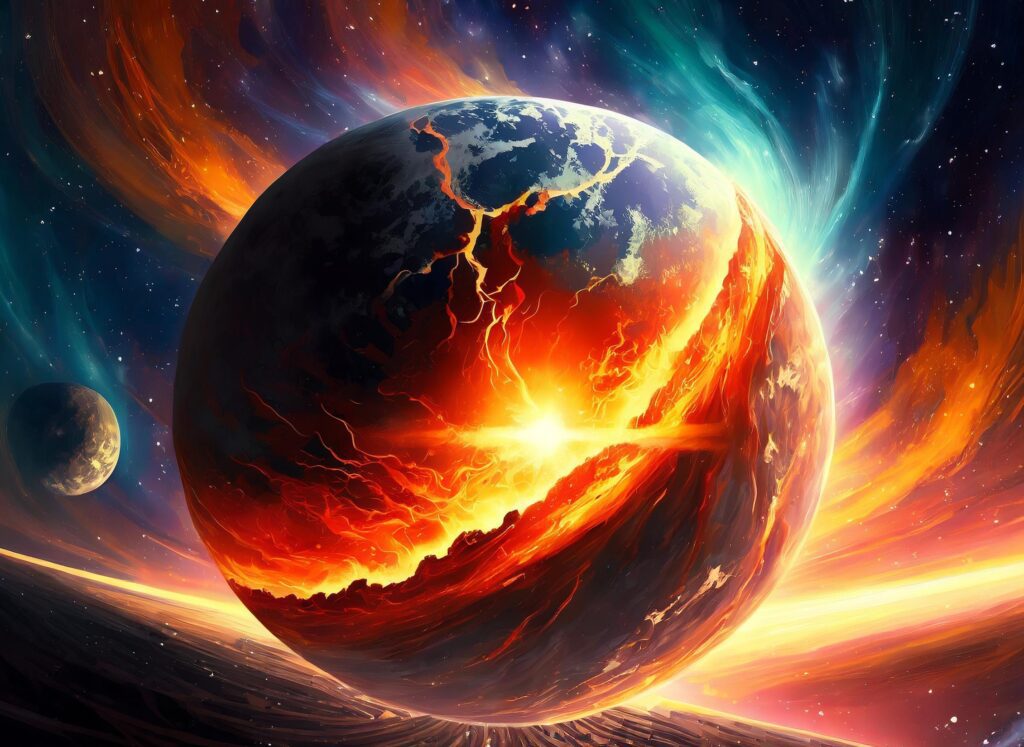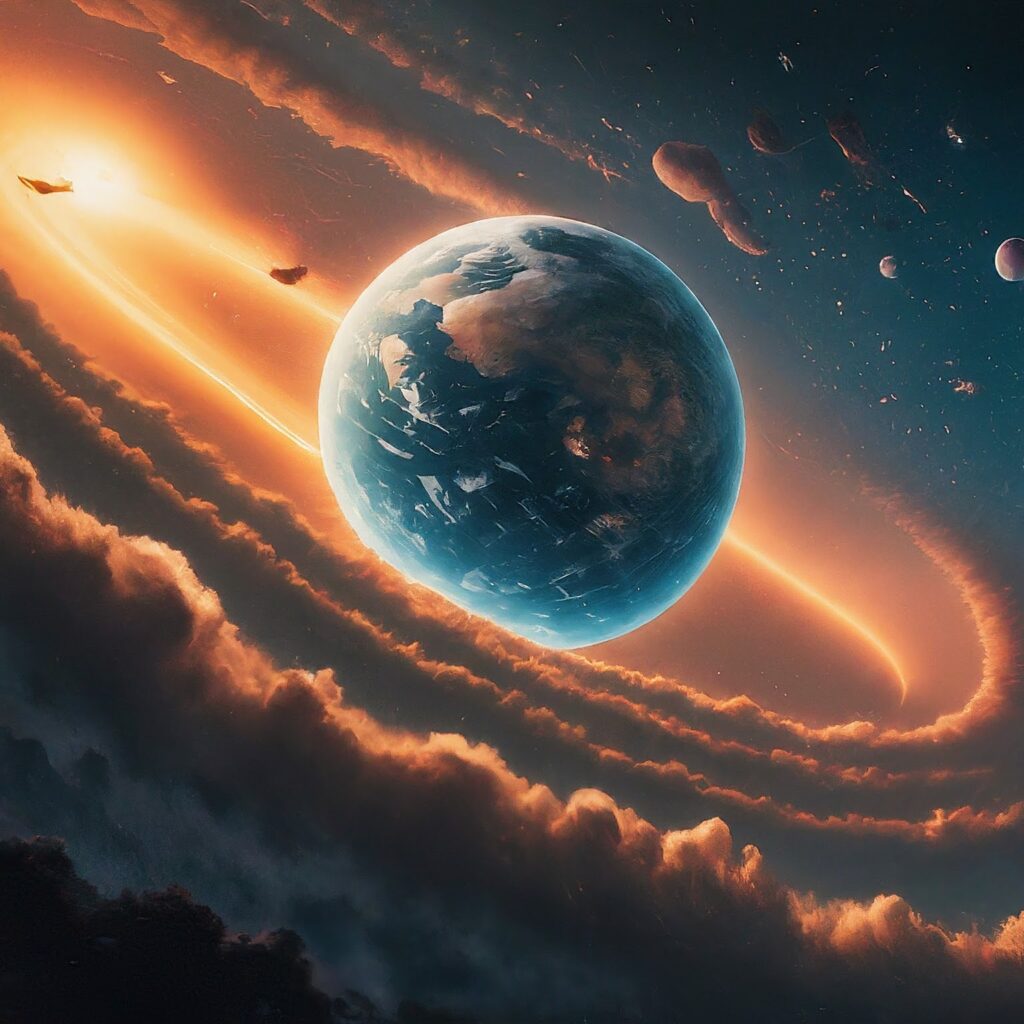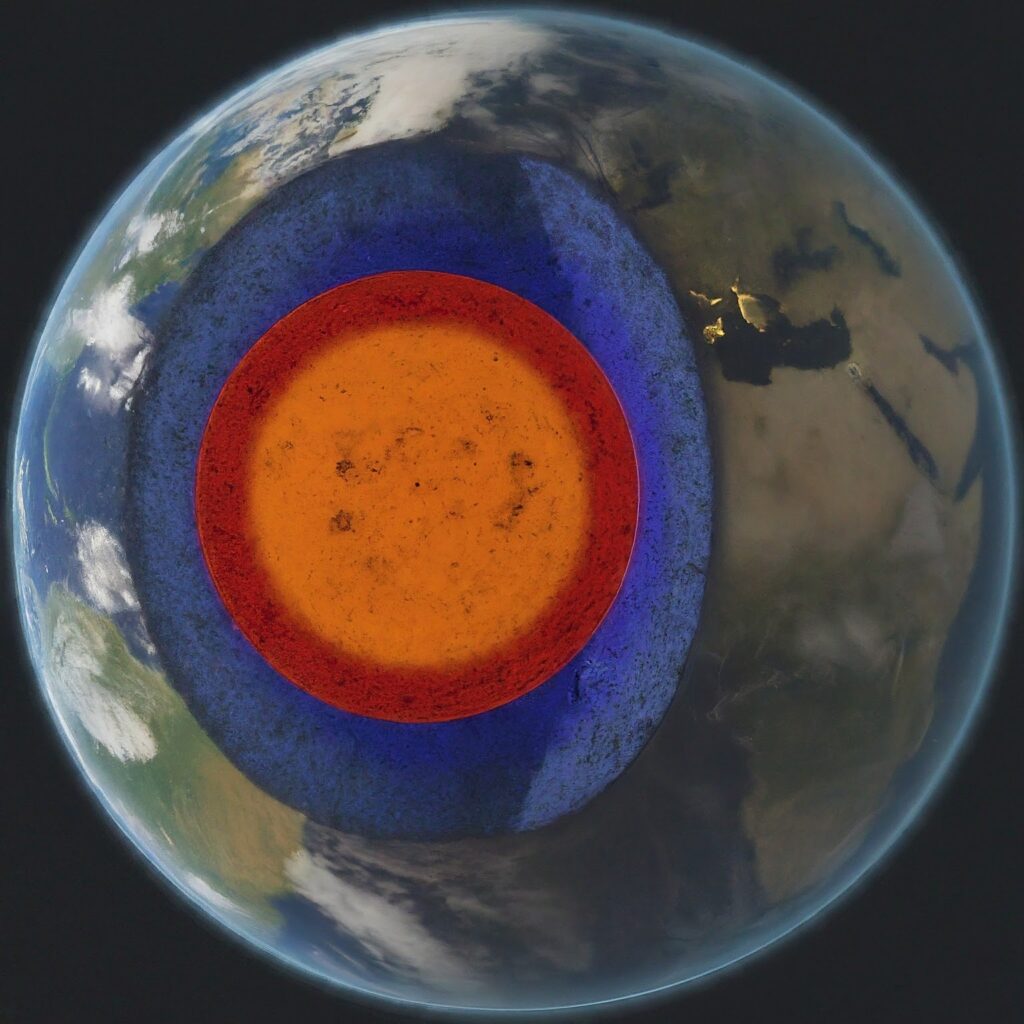The Earth’s crust is the outermost solid layer of the planet, composed of rocks and minerals. The Origin and Evolution of the Earth Crust is a complex phenomena with lots of events affecting each other.

Table of Contents
Origin of the Earth Crust
Stage I: Planetary Accretion
The Earth formed approximately 4.6 billion years ago from the gravitational collapse of a massive cloud of dust and gas known as the solar nebula. Over time, small particles within the nebula collided and clumped together due to gravitational attraction, forming larger bodies called planetesimals. These planetesimals continued to collide and accrete, eventually forming the Earth and other planets in the solar system.

Stage II: Differentiation
As the Earth continued to grow through accretion, it underwent a process called planetary differentiation. This process involved the separation of materials within the Earth into distinct layers based on their density. The denser materials, such as iron and nickel, sank towards the center of the Earth to form the core, while the less dense materials, such as silicates, remained in the outer layers to form the mantle and crust.

Stage III: Crustal Evolution
The Earth’s crust is primarily composed of silicate minerals, with the continental crust being less dense and thicker than the oceanic crust. The earliest crust formed through processes like volcanic activity and the solidification of magma oceans. Over time, the crust underwent various geological processes such as plate tectonics, volcanic activity, erosion, and sedimentation, leading to the formation and modification of different types of crustal rocks and landforms.
"Early Earth was extremely hot, mostly molten due to constant collisions and radioactive decay of elements."
Evolution of the Earth’s Crust
Over time, the Earth’s crust has undergone continual changes and modifications, driven by geological processes such as plate tectonics, volcanic activity, and erosion. Plate tectonics, in particular, has played a major role in shaping the Earth’s crust. This theory states that the crust is made up of large, moving plates that interact with one another, causing earthquakes, mountain building, and the creation of oceanic crust.
The Earth’s crust is not uniform in composition and thickness. The crust beneath the continents, known as the continental crust, is thick and composed of lighter rocks such as granite. The crust beneath the oceans, known as the oceanic crust, is thin and composed of denser rocks such as basalt. Over billions of years, the Earth’s crust has been reshaped and reformed as a result of geological processes, resulting in the diverse landscapes and geological features we see today.
Read: Geography